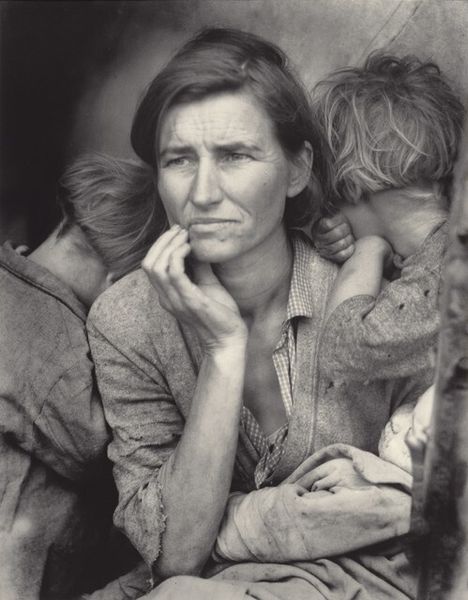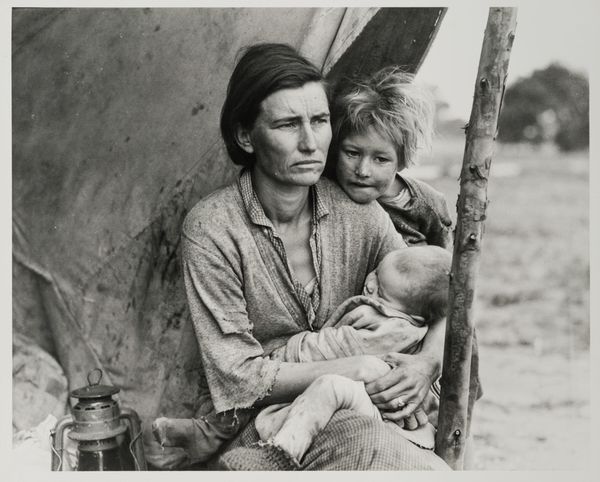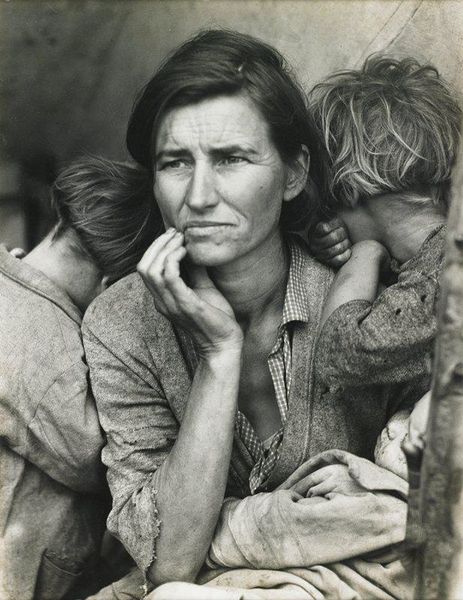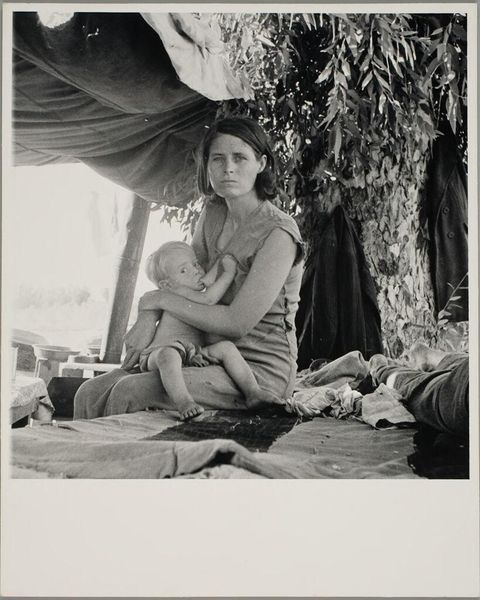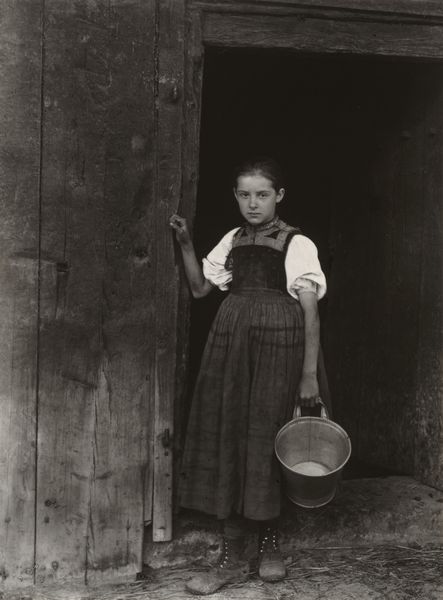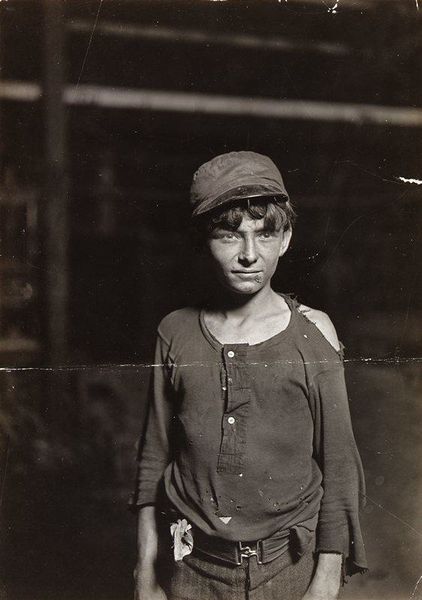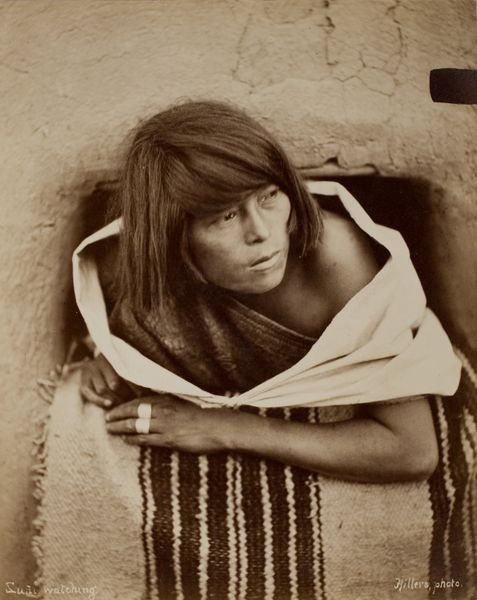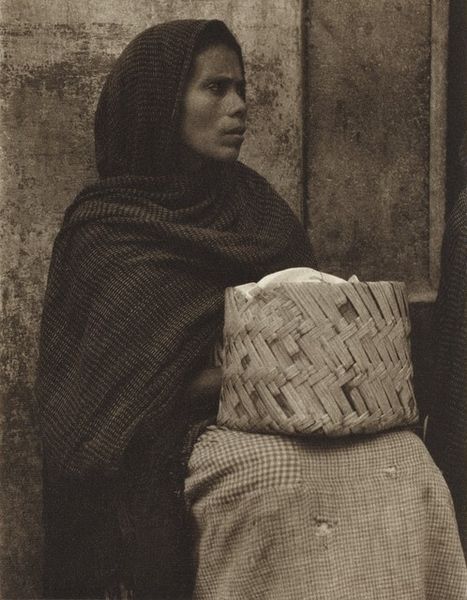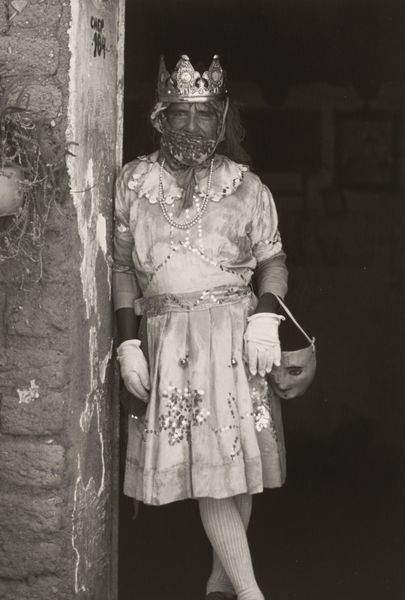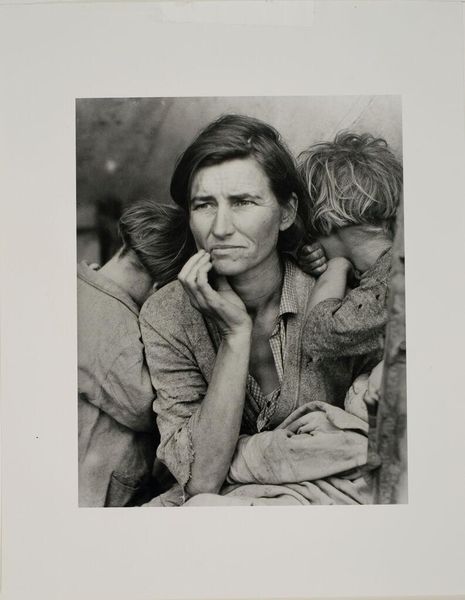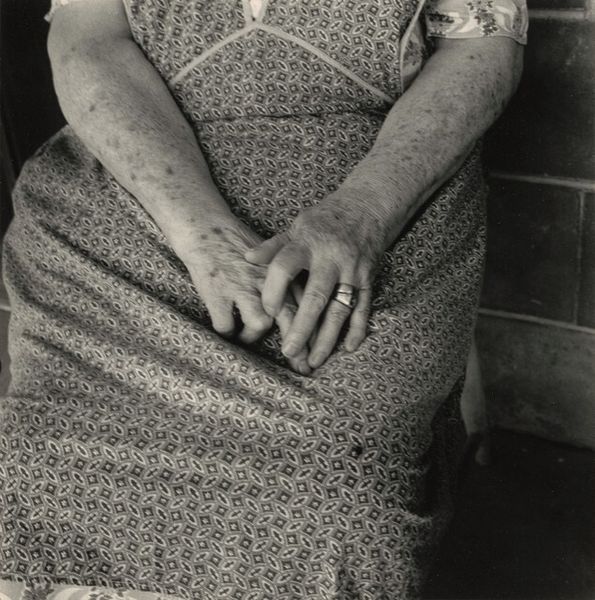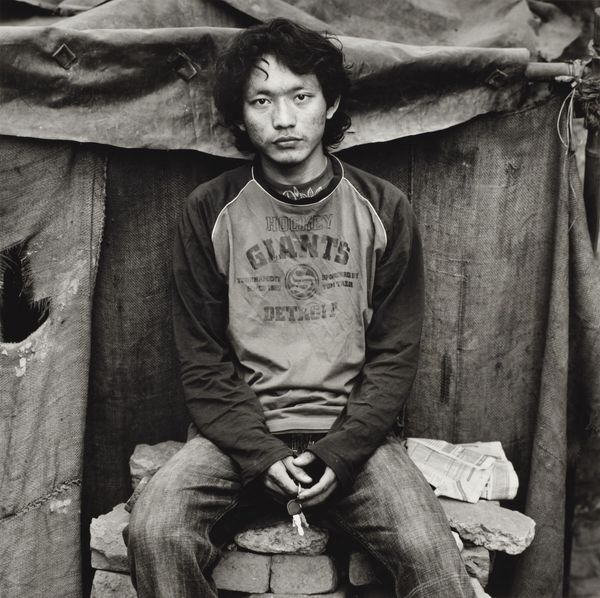
photography, gelatin-silver-print
#
portrait
#
black and white photography
#
landscape
#
social-realism
#
photography
#
black and white
#
gelatin-silver-print
#
monochrome photography
#
ashcan-school
#
monochrome
#
monochrome
Dimensions: image: 26.67 × 34 cm (10 1/2 × 13 3/8 in.) sheet: 27.94 × 35.56 cm (11 × 14 in.)
Copyright: National Gallery of Art: CC0 1.0
Curator: Lange's "Migrant Mother" is searing. Captured in 1936, this gelatin-silver print immortalizes a mother and her children during the Great Depression. The print itself—what do you make of its impact beyond just the visual representation? Editor: Well, the photograph has such an iconic, almost biblical, quality, despite its subject: a poor, likely exploited worker. I'm struck by the quiet suffering captured; how does Lange negotiate the social realities and lived experiences within this piece? Curator: Exactly. Think about the material realities behind its production. Lange was employed by the Farm Security Administration. The image becomes a tool, documenting the conditions of migrant workers but also shaping public opinion and justifying governmental intervention. The very act of photographing changes the equation – labor, representation, and the agency involved. How do you see the woman’s clothing in relation to this? Editor: It seems worn and functional. It blends into the background. The clothing is less about individual expression and more about the conditions of agricultural work – maybe even symbolizing the anonymity and disposability of migrant labor. It reminds us that “style” itself has very real material prerequisites. Curator: Precisely. The gelatin-silver print isn't just a medium, it’s also a mass-producible commodity. Copies circulated widely, influencing art and political discourse alike. The materials used speak volumes about both artistic expression and socio-economic infrastructure. What did this photograph mean to you? Editor: It highlighted the raw reality of exploited labour and material precarity; that challenges us to acknowledge our active role in an evolving cycle of consumption and cultural production.
Comments
No comments
Be the first to comment and join the conversation on the ultimate creative platform.
